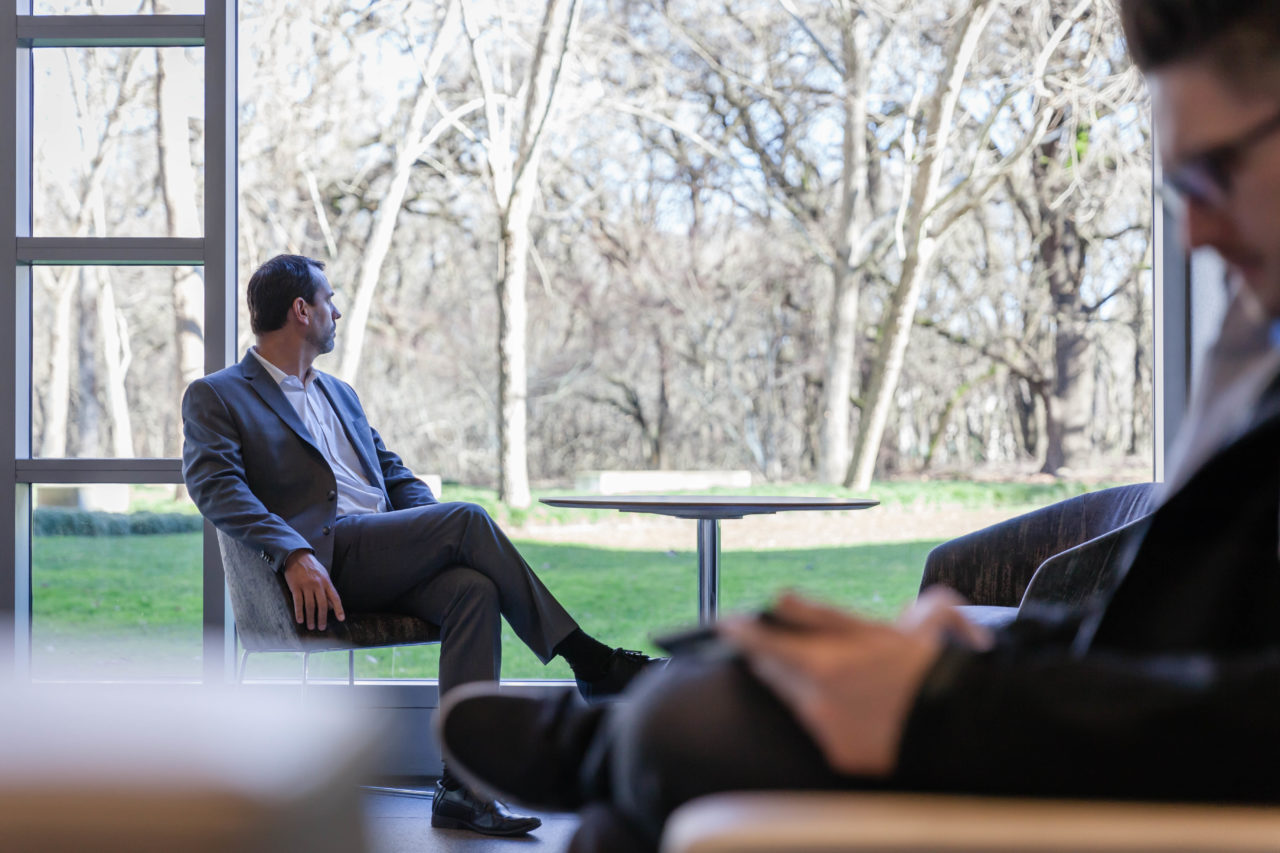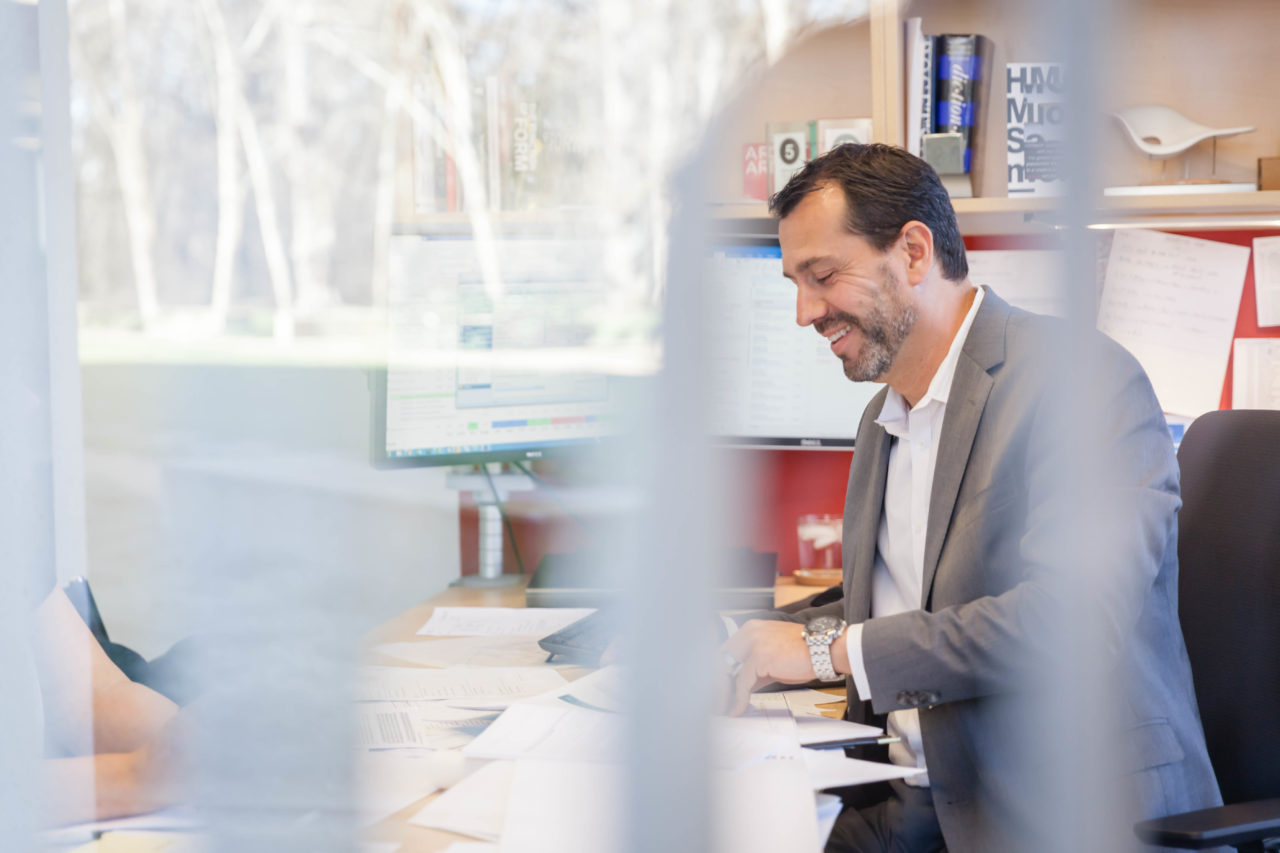Understanding the big picture and remaining true to his architecture roots—these are Arturo Levenfeld’s priorities when it comes to managing HMC Architects’ Sacramento studio. With 20 years of architectural experience, Arturo’s management style weaves his love for design with a genuine appreciation for his team, resulting in creative project solutions that make his studio unstoppable. We caught up with Arturo to learn more about his leadership style, what he hopes to accomplish, and his views on where the future of K-12 architecture is heading.
How long have you worked at HMC, what is your expertise, and what types of projects have you worked on?
Since starting with HMC 11 years ago, I have focused primarily on education projects. For me, the education market is an absolute pleasure because of the clients. Everyone involved in the design and construction process—from the school district, to the board of directors, to the maintenance staff—we’re all striving for the same goals. No one is trying to make huge profits, we’re all just trying to do what is best for the students.
Tell me about your current role and objectives.
When I was promoted to managing principal of the Sacramento office a few years ago, I made it clear to my team that I haven’t changed. I’m still an architect with the same interests and goals—no matter what my role is, I care deeply about the quality of design and services that we provide for our clients. As managing principal, I’m now in tune with the business aspects of architecture, and I’ve gotten a wider perspective of the practice. I truly enjoy working with the Sacramento team, sharing my past experiences with them, watching them develop their own approaches to challenges and solutions, and ultimately seeing them grow and become trusted partners with our clients.
What value do you bring to HMC clients in your role?
As managing principal, I’m not necessarily working on every project in Sacramento, but I’m able to connect with my team to foster a positive, creative work environment and empower them to thrive. In my opinion, the quality of our services and client solutions depends wholly on our people, so it makes total sense to build a strong, collaborative team. Together, we participate in lots of team buildings exercises, meetings, and are constantly on the lookout for opportunities to get inspired. Every month, we host a “happy half hour,” where everyone stops working and we start a design conversation about architecture. It’s a way to get the team away from their desks and engaged in conversations with their colleagues. Everyone gets together in the same room, we bring in lunch, and we foster meaningful dialogue about a topic of interest. I’m also a fan of regularly-scheduled design charrettes so that the entire team is aware of what their colleagues are working on. And every so often we embark on field trips, such as building tours, for some real-life design inspiration to keep us energized. At the end of the day, the best value we can bring our clients is with our incredible people and their ideas, and I’m a keen supporter of opportunities that support the betterment of my team.
What inspires or excites you about architecture?
I’m fascinated with the way architecture effects human beings, and how great design solutions can impact our communities. Simple things, like a well-thought-out color scheme, the size of a room, the acoustics—it’s basic architectural design elements like these and the influence they can have on human beings, these are the little things that inspire me.
What do you think the biggest challenge will be facing the K-12 industry? How can architects help our clients face those challenges?
Thanks to Prop 51, the K-12 market has significant funding right now, enabling school districts to address their facility needs. One of the biggest challenges the A/E industry is going to face is our ability to do all the work that is out there, while still providing quality service and focusing on both existing clients and new opportunities.
Another challenge revolves around public schools and project delivery methods. Design-build is being pushed as the preferred project delivery method in the K-12 arena, which is a new concept for many school districts. At HMC, we’ve been successfully using the design-build delivery method for both healthcare and higher ed projects, so it’s a great way to bring those experiences and expertise to the K12 market. We can turn this challenge into an opportunity to focus our priorities to better serve our clients and take on a more collaborative design approach with them.



